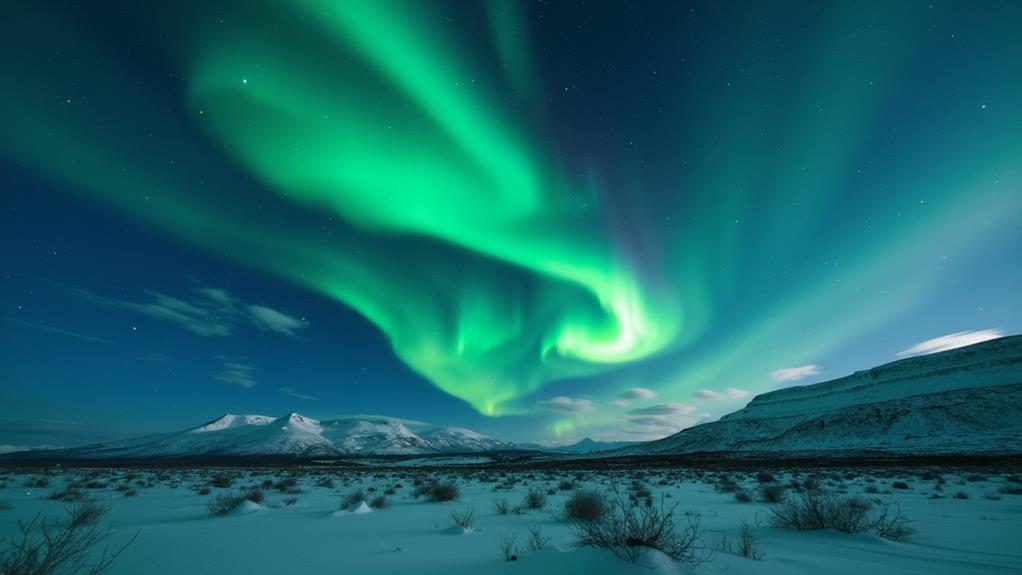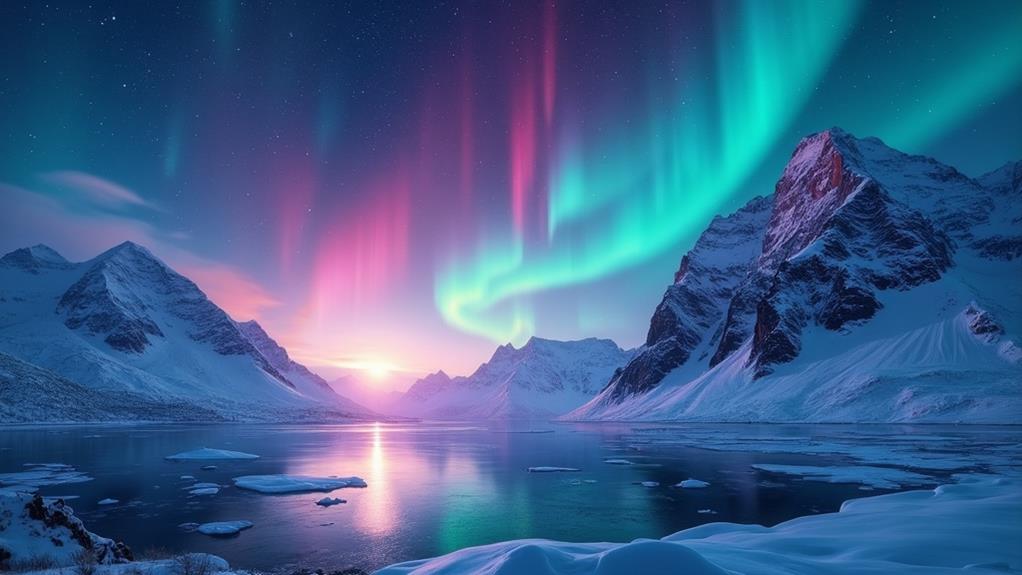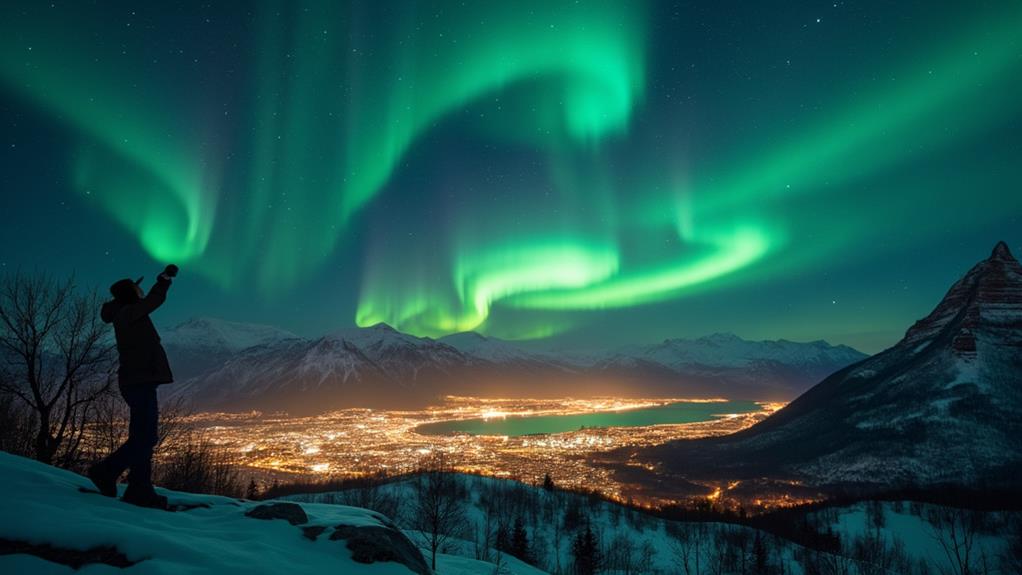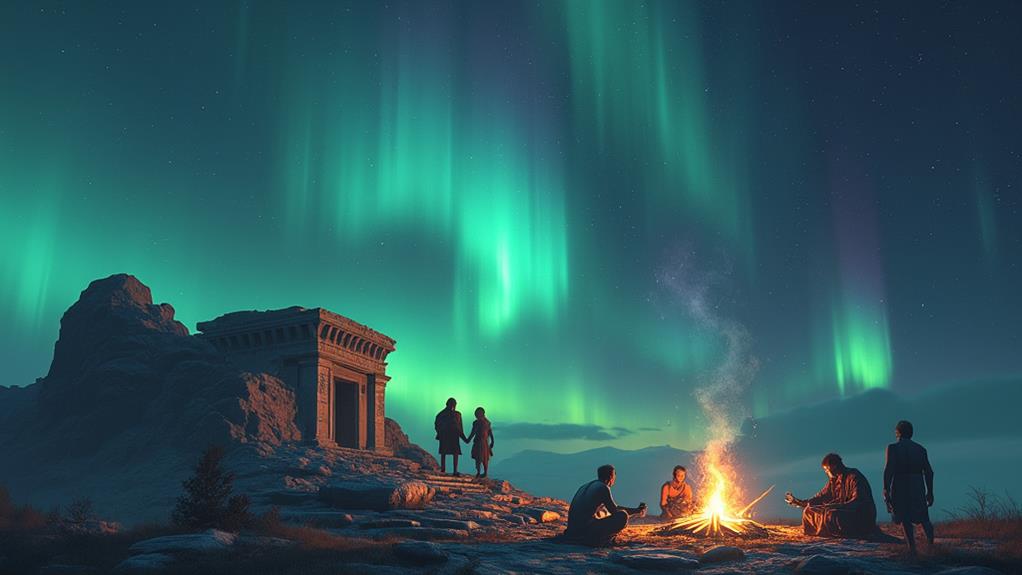How Long Do the Northern Lights Last? Duration and Frequency
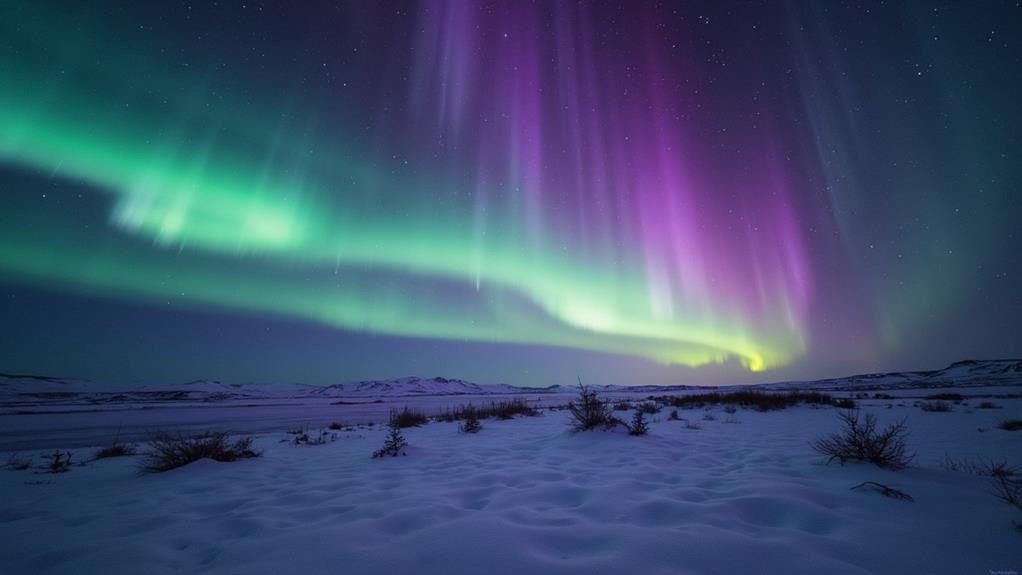
The Northern Lights, or Aurora Borealis, can last from a few minutes to several hours. The most vibrant displays typically occur around midnight, with prime viewing times between 9 p.m. and 2 a.m. Their frequency and duration are influenced by solar activity and geomagnetic conditions. Seasonal variations also play a role, affecting your chances of witnessing this natural spectacle. By understanding these factors, you can enhance your experience of the Northern Lights.
Factors Affecting Duration
The duration of Northern Lights displays is influenced by several factors. Firstly, solar activity plays a critical role. Higher solar activity results in more intense and longer-lasting auroral displays due to the increased interaction between solar wind and Earth's magnetic field.
Geomagnetic conditions also affect the duration of auroras. Peak geomagnetic activity, usually around midnight, results in more active and prolonged displays. However, local weather conditions, such as cloud cover, can obscure the lights and reduce visibility, shortening your observation time. Similarly, light pollution from urban areas can hinder visibility, even during active displays.
Seasonal variations are another significant factor. During autumn and spring, longer and more frequent displays are common due to ideal geomagnetic conditions and extended nighttime hours, offering better opportunities to witness these celestial events.
These factors—solar activity, geomagnetic conditions, local weather, light pollution, and seasonal variations—collectively determine the duration of Northern Lights displays, making each viewing experience unique.
Typical Length of Displays
Understanding the typical length of Northern Lights displays can enrich your aurora-watching experience. These displays can vary dramatically in duration, lasting from just a few minutes to several hours. The length of these mesmerizing events is heavily influenced by solar activity and geomagnetic conditions. For instance, during periods of high solar activity, you might witness multiple auroral displays in one night, enhancing your viewing experience.
The Earth's magnetic field plays a critical role in the duration of the display, as interactions between the solar wind and the magnetic field can either shorten or prolong the aurora's visibility. Typically, the best time for prolonged aurora visibility is around midnight, when geomagnetic activity tends to peak. However, each sighting is unique and can be influenced by factors such as local weather and solar wind intensity.
While some auroral events are fleeting, others can captivate you for extended periods. The variability in geomagnetic activity means that no two Northern Lights displays are the same. This unpredictability and beauty make each sighting a truly unforgettable experience, regardless of its duration.
Seasonal Variations
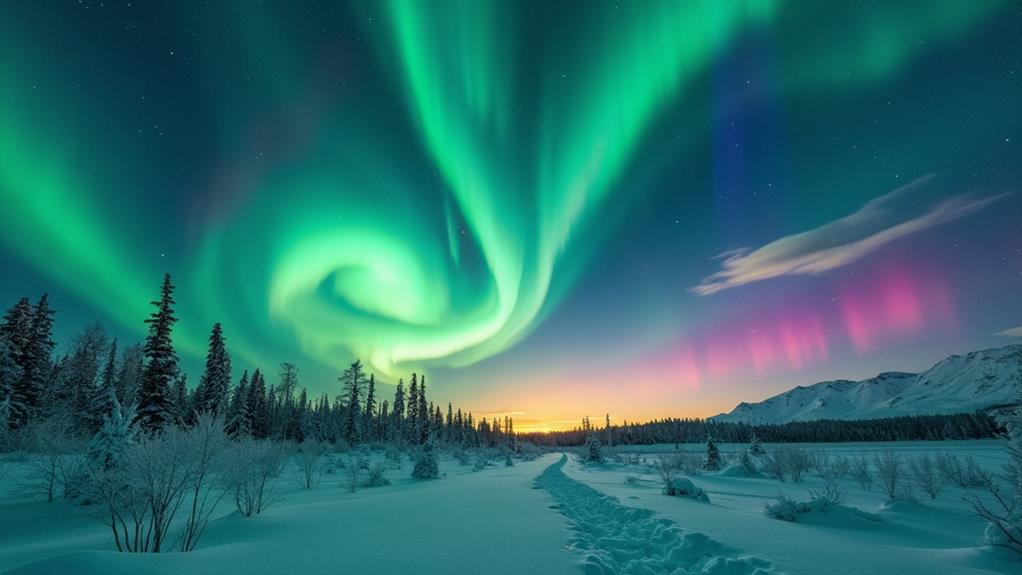
Seasonal variations significantly influence your Northern Lights viewing experience. The prime time to witness the auroras extends from late August to April, when the long, dark nights provide optimal conditions. Geomagnetic activity peaks around the equinoxes in late September and March, making autumn and spring ideal for vibrant displays.
During winter, the extended darkness offers excellent viewing conditions, although the extreme cold may deter some visitors. Despite the chill, winter's clear, crisp skies often yield some of the most stunning aurora sightings. In contrast, the summer months present challenges due to the midnight sun, which causes continuous daylight and obscures any chance of seeing the Northern Lights.
In both autumn and spring, enhanced geomagnetic activity leads to more frequent and striking auroras, with late September and early spring being particularly notable for increased aurora frequency. Understanding these seasonal variations and planning your visit during these active periods will significantly improve your chances of witnessing this mesmerizing natural phenomenon.
Frequency of Sightings
If you're eager to witness the Northern Lights, you'll want to know the best times for optimal viewing. The prime period for sightings is from September to April, particularly during autumn and spring. During these months, longer nights and clearer skies create ideal conditions for observing auroral activity.
Auroral activity is influenced by an 11-year solar cycle, with the highest frequency of sightings occurring around solar maximums. The next peak is anticipated between early 2024 and late 2025, presenting a great opportunity for some remarkable displays. During these periods, high solar activity can produce multiple auroral events in a single night, sometimes lasting several hours.
For the best chances, visit locations within the auroral zone, such as Alaska, Canada, and northern Scandinavia. These areas, close to the magnetic poles, experience more frequent auroras. Occasionally, strong geomagnetic storms can extend auroral visibility to lower latitudes, although such events are rare.
Best Viewing Times
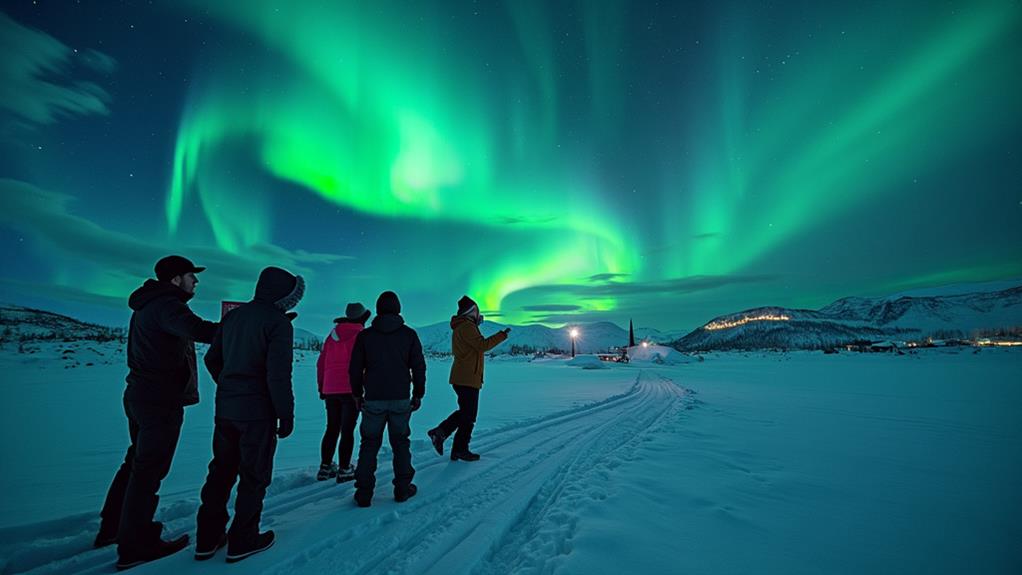
To maximize your chances of witnessing the Northern Lights, plan to be outdoors between 9 p.m. and 2 a.m., with peak activity typically occurring from 11 p.m. to midnight. This period aligns well with peak solar activity and optimal geomagnetic conditions.
The best time of year to view the Northern Lights is from late August to April, with prime opportunities around the autumn and spring equinoxes due to heightened solar activity. The duration and frequency of aurora displays vary, influenced by the solar cycle and geomagnetic storms. Some displays may last only a few minutes, while others can extend over several hours.
Clear, dark skies are essential for optimal visibility. To fully appreciate the Northern Lights, avoid areas with light pollution and choose a location with favorable weather conditions. Clouds and city lights can significantly diminish the experience, so selecting a remote area is crucial for the best viewing experience.

